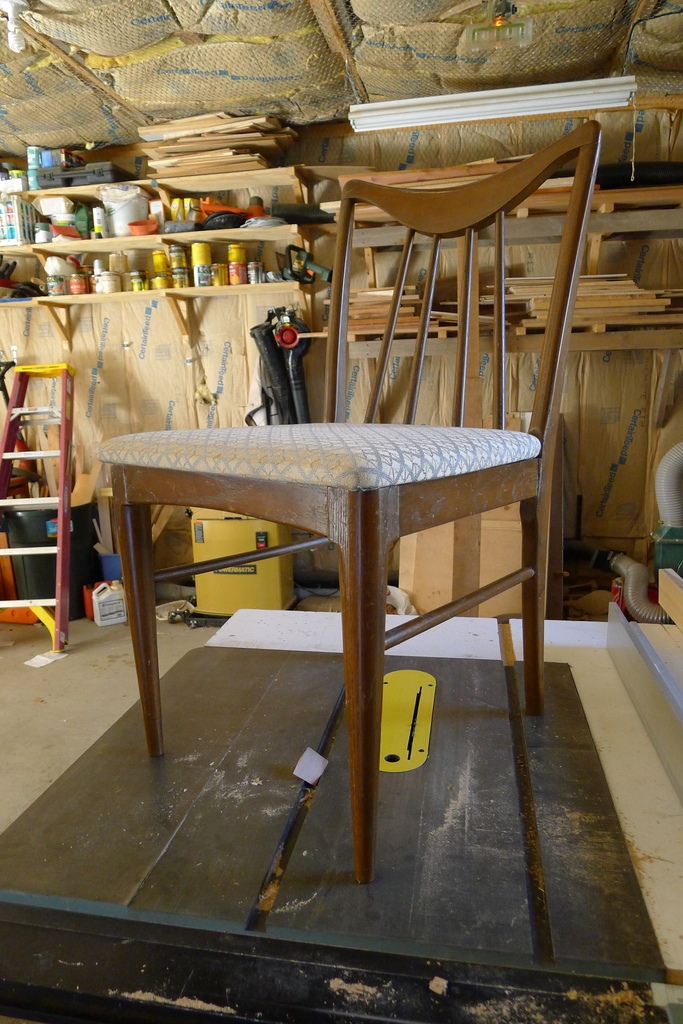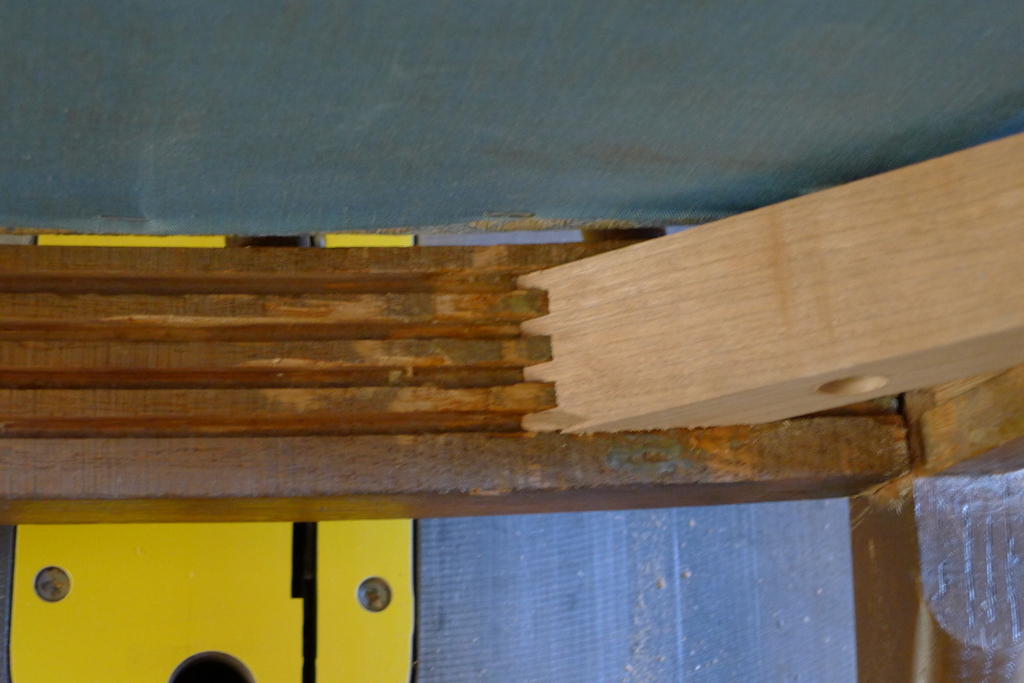
A couple of months ago, The Wife’s Aunt asked me if I could fix this chair. She then proceeded to show me how it was very “wobbly.” She was concerned that it would break the next time someone sat in it.
She had good reason to be concerned. The glue in most of the joints between the legs and the cross pieces had failed and in most cases the tenons were working their way apart. Somewhere along the way, someone had attempted to “fix” the problem by smearing a heavy layer of glue all over the joints. This attempt probably worked right up until someone sat in it- glue isn’t a structural medium. It’s a binding medium to use with structural elements in a project.
At any rate, after looking it over a bit I felt it was salvagable. She took the pressure off me when she said she wouldn’t be heartbroken if it wasn’t fixable. I figured I had nothing to lose since, if I broke something critical while pulling it apart, I could just tell her it didn’t work out.
But that wasn’t the goal.
There’s no real blow-by-blow here. The process was pretty simple- gently break down the chair at the failed joints, clean the mating surfaces up so they would accept a new coat of glue, then reassemble.
The process wasn’t without setbacks.
The cross pieces that form the apron around the chair at the top of the legs were not fully mortised into the legs. Rather, they were peg-mortised into the legs. I managed not to break any of the pegs on initial disassembly. But, in order to firm up the fit, I decided to cut a slit down the middle of the pegs and blind wedge them. The blind wedge caused me problems (I couldn’t get the cross pieces to fit flush against the legs because the wedge prevented me from fully seating the pieces into the leg) when I started reassembling and I broke a number of the pegs when subsequently disassembling things.
If there’s a next time, I’ll just cut the pegs off and redrill the mortise holes and use some dowel rod for the peg-tenons, rather than trying to reuse. This process has the added benefit of making a good tight joinery fit without legacy glue to worry about.


Finally, I had some miscellaneous observations regarding the construction:
- The pegged tenons are bad for a chair. In fact, any kind of tenon with a shoulder on any edge is a bad idea. Why? It creates a fulcrum for the cross piece that will break the glue bond through the racking action a chair suffers through. Screws and hardware can’t fix the problem either.
- In the pictures above, you can see the corner braces used to reinforce the chairs structure. Again, not so sure they are a great idea because they create a force that can actually work to compromise the joinery. The box style finger joints aren’t a bad touch though.
- Having screws penetrate up into the seat area seems like a bad idea for the sitter. Know what I mean?